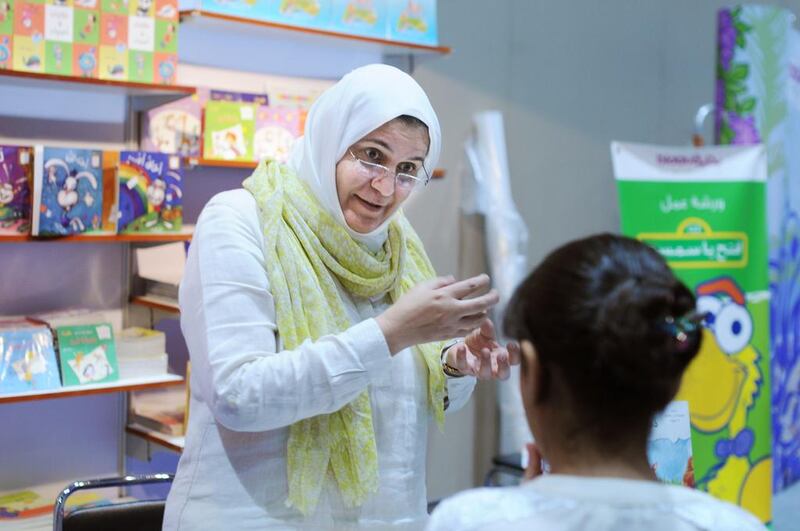From the UAE to Morocco, the Arab world has been witnessing a different kind of Arab Spring – that of the publishing kind.
The region has the smallest reading audience in the world, according to a recent UN Arab Human Development Report, but it has witnessed the establishment of many specialised children’s publishing houses.
Before their emergence, children’s books were a neglected side business. As a result, generations of children in the Arab world were offered boring and visually unappealing books or translated books from the West that did not reflect their environment. (The one exception being Dar El Fata El Arabi, which was set up in the 1970s to bring attention to the Palestinian cause.)
At the forefront of this new literary spring are women. These female “literary activists” are hoping to encourage reading from a young age and improve literacy in the Arab world.
However, they face a tough task because there are many challenges, such as a lack of talented writers, copyright issues, poor distribution links and the indifference of the cultural ministries. Lebanese publisher Nabeeha Al Meheidli is considered one of the pioneers of children’s publishing. She started the Dar Al Hadaek house more than 20 years ago to publish Arabic books for children that are written by Arabs.
“The Arab children have the right to have books that reflect their current reality, history, culture, and respect their intellect,” she says. Ms Al Meheidli is adamant that she does not want to translate from other languages. “We have tried our best to linguistically use a language that does not discourage the child from reading and use illustrations reflecting the Arab aesthetic tradition that is echoed in the child’s real world,” she says.
Dar Al Hadaek has published 350 titles, some of which have won local and international awards. One of its award-winning books is Creatures on the Ceiling.
It’s the story of Kareem, a poor boy who lives with his parents in a modest home. Through his vivid imagination, Kareem’s bedtime becomes a time of joy and wonder as he explores the magical world of his room’s ceiling.
Another trailblazer in this field, Amina Hashim, set up the first publishing house, Yanbow Al Kitab, for children in Morocco in 2004. Mrs Hashim focused on promoting Moroccan heritage through her books.
“We need the younger generation to have an insight into their rich history and only then will they have pride in their heritage,” she says.
One of Yanbow Al Hayat’s books, Mama prepares couscous, encourages children to explore Morocco’s cuisine.
Because Moroccan teachers did not know how to encourage reading, Mrs Hashim took on the task of training them to interact with children’s books. Her organisation holds training workshops in schools, particularly in the rural parts of Morocco.
“It is not enough just to publish the books, you also need to stimulate children’s curiosity to read them,” she says.
Dubai-based Safa Azmi runs Wahat Al Hekayat, a publishing house whose mission is to introduce Arabic to children in a simple, attractive and poetic way. Ms Azmi ventured into literature after realising that her bedtime stories were not only popular with her children but their friends as well.
“When my children were growing up I rarely found any nice Arabic books for them. So I ended making my own stories, which my kids loved,” she says. After one of her stories won a local award about 15 years ago, she left her job as a dentist to start writing full time. About four years ago, she set up her publishing house.
However, it has not been a smooth ride for the publishers. Mahmoud Hassonah, from the Arab Children’s Book Publisher’s Forum in Sharjah, says many publishers found it difficult to expand their offering of books because of weak sales.
Another hurdle is the lack of reliable figures about sales, book production, and difficulties with regional distribution, he says.
The average print run of a new book is between 1,000 and 3,000 copies, according to Ms Al Mehaidli. To add to the publisher’s misery, a high percentage of published books are never sold.
Many of these children’s books can only be found in libraries in the UAE, and are still not on sale in bookshops.
Ms Azmi, whose books are popular with teachers because they aid in teaching literacy, says publishers need support and proper distribution channels to ensure that their books are available outside their countries of origin.
Aware of parents’ inability to buy books in Morocco, Mrs Hashim initiated a grassroots campaign to distribute books to needy children.
“‘One child, one book’ is an initiative to distribute books to orphanages, associations and public schools across Morocco. So far we have distributed 100,000 books,” she says.
Despite all the hurdles, Ms Al Mehaidli is optimistic about the future for children’s books, as more publishers, especially women, are joining the fray.
Today the library of Arab children is richer thanks to the efforts of Ms Al Mehaidli and her peers.
Shadiah Abdullah Al Jabry is a regular contributor to The National.





